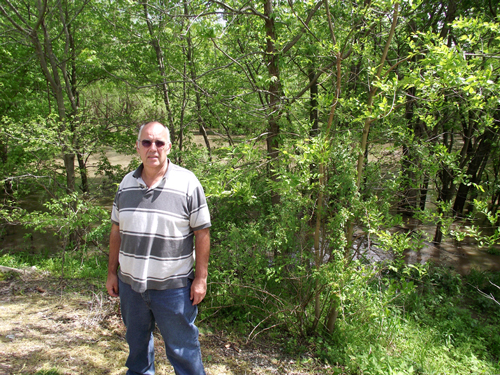Leptospirosis – USA (Illinois & Wisconsin)
Friday, July 31, 1998
St.Louis Post-Dispatch
Kevin McDermott
On the Iron Horse Triathlon Web page the conversation lately has been more medical
than athletic. “Thought it was a sinus problem and ended up on my back for six days
with massive frontal headaches, chills . . . 103-degree fever,” reads one athlete’s
message on the Springfield-based Internet site. Another: “Six days without food has
left me extremely weak. . . . My liver enzymes are still off the charts.” And
another: “Severe backache, high fever, nausea, extreme fatigue, etc. I tried to
treat the fever for three days while laying in bed the whole time. . . . This has
been an alarming last two weeks.”
Health officials say those victims and scores of others are part of what might be the biggest outbreak recorded in the United States of leptospirosis, or “swamp fever.”
The infection apparently began in Lake Springfield and has hit victims from all over the country who swam there June 21 as part of the Iron Horse Triathlon. No one has died, but 84 people in Illinois have reported symptoms, with at least three more in St. Louis County.
Officials know the waterborne _Leptospira_ bacterium originates in the urine of animals, and that it can infect humans by seeping through the membranes of the mouth and eyes. But how it got into Lake Springfield in high enough concentrations to cause an outbreak is a mystery. “It’s the largest point-source of leptospirosis that we’ve ever seen,” said epidemiologist David Ashford of the Centers for Disease Control in Atlanta, which is coordinating the effort to track everyone who might have been infected.
Ashford said that each year about 80 to 150 cases of leptospirosis are reported nationwide, usually from many limited, unrelated infections caused by small ponds or swimming pools. (The infection cannot be spread by humans.)
It’s still unknown how many might have been infected in Lake Springfield – “That number is changing every hour,” Ashford said – but officials have found symptoms in about 12 percent of the people who were exposed to Lake Springfield last month. There were more than 850 registered participants from 42 states in the triathlon, including 72 from Missouri, 19 of those from St. Louis. That means more than 100 participants might be infected, based on the CDC averages. [Note: 87 have reported symptoms which would be within the standard error. MHJ] And that doesn’t include people who swam in the lake but weren’t affiliated with the event.
Lake Springfield remains under an advisory to residents to refrain from swimming, and most of the beaches are closed. One test by the CDC has indicated some presence of Leptospira bacteria in the lake, but it’s still unclear whether the concentration is higher than normal. Among the mysteries facing investigators is how an infection usually associated with small, stagnant bodies of water could occur in an open, free-flowing lake. They’re also wondering why a recreational lake that has been heavily used for years with no reported health problems suddenly would spawn such a widespread infection. State health officials have been testing the tributaries that feed the lake but have been hampered by dry weather. A moderate rain early Thursday might have helped the investigation, said Clint Mudgett, environmental health chief for the Illinois Department of Public Health, because it allowed scientists to finally gather watershed runoff samples in conditions similar to those on the morning of the race.
One focus of the investigation is to try to link the infection to a specific kind of animal urine – a daunting challenge, because the bacteria can be transmitted by both wild and domestic animals, and the lake is surrounded by wildlife and farmland.
“There’s no shortage of theories,” said Mudgett. His own theory – centered on a large dose of unlucky coincidences – goes like this: “This year, the wild animal population around the lake is reported to be heavier than it’s ever been. Then you have (almost) 900 swimmers in exactly the same part of the lake at the same time. There was a very heavy rain that morning (possibly washing unusually high levels of animal waste into the lake all at once). You might have just had all these factors coming together.”
The triathlon organizer said Thursday there is a new element to the case: a civil suit by one of the leptospirosis victims, naming the event “and others” as defendants. “I was served (with notice of a suit) yesterday,” said Paul McDevitt, who is in his first year as director of the 13-year-old annual triathlon, in which amateur athletes bicycle, run and swim.
“At the very first sign (of an outbreak) we moved quickly” to work with health officials, McDevitt said, but added: “The whole tenor of the thing has changed (with the lawsuit). I have to be careful what I say from here on out.” McDevitt said he couldn’t provide more details about the suit. An employee of the Cook County Circuit Clerk’s office couldn’t confirm that it had been filed.
The CDC also is investigating whether a lake used for a Wisconsin triathlon July 5 might have been another source of infection. Many of the Springfield triathlon participants who have reported symptoms swam in both lakes. But officials haven’t confirmed that any leptospirosis cases originated in Wisconsin.


